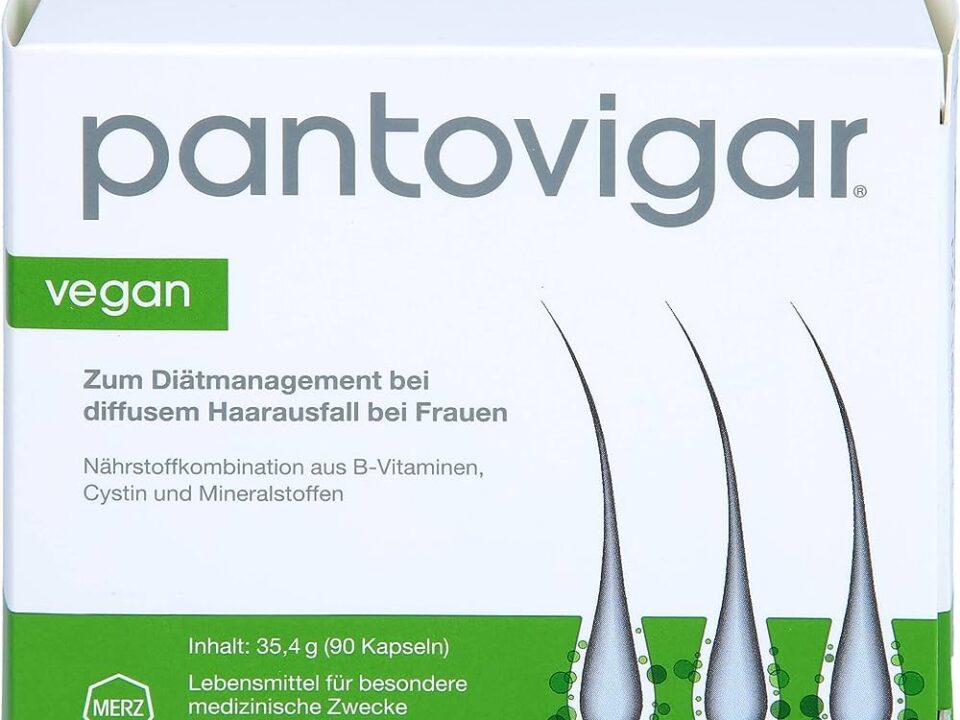
Unlocking the Potential of Enhertu: A Revolutionary Advance in Targeted Cancer Therapy
February 7, 2024
Understanding Palbociclib (Ibrance) in Advanced Breast Cancer Treatment
February 13, 2024Prophylactic Mitomycin-C Application for Haze Prevention after Photorefractive Keratectomy in Myopia: A Systematic Review
According to American Academy of Ophthalmology, Photorefractive Keratectomy (PRK) is a popular refractive surgery used to correct myopia and occasionally, to prevent any haze following PRK, doctors might opt to use Mitomycin C. Mitomycin-C (MMC), an antimetabolite, is sometimes used prophylactically at the concentration of 0.02 following PRK to prevent corneal haze formation. The prophylactic use of Mitomycin C 0.02 has been a subject of debate in the field of ophthalmology, sparking discussions around its benefits and potential complications. This systematic review from American Academy of Ophthalmology aims to address several questions surrounding the use of MMC in PRK surgery, particularly in the context of haze formation after photorefractive keratectomy.
Questions answered today:
Is Mitomycin-C used in PRK surgery?
Mitomycin-C is indeed used in PRK surgery, primarily for its potential to inhibit haze formation following the procedure, especially in cases of high myopia.
When do you use MMC in PRK?
MMC is typically used following PRK as a mitigating measure to treat haze and regression after the surgery, especially in patients undergoing photorefractive keratectomy for high myopia.
Why is Mitomycin-C used in eye surgery?
Mitomycin-C is utilized in eye surgery, particularly in PRK, to prevent haze formation as it has shown potential in inhibiting the development of corneal haze following photorefractive keratectomy.
What are the complications of Mitomycin-C?
While MMC is a potent agent to treat haze in corneal surface, its use may have potential complications such as delayed epithelial healing and heightened risk of corneal thinning.
How do you prevent corneal haze after PRK?
Corneal haze after PRK can be prevented or reduced through the prophylactic use of Mitomycin C, which helps inhibit haze formation following the procedure.
What medications are given for PRK surgery?
In PRK surgery, medications such as topical Mitomycin-C (MMC) may be given as a prophylactic measure to prevent haze formation and promote better surgical outcomes.
Application of MMC in conjunction with PRK can be used in every case, but should it be?
The prophylactic use of Mitomycin-C in conjunction with PRK, while having potential benefits in preventing haze formation, also poses considerations regarding its widespread application and the associated risks. The evaluation of the use of Mitomycin-C to inhibit haze formation after photorefractive keratectomy is crucial in determining its appropriateness for individual cases.
Photorefractive Keratectomy (PRK) for myopia is a popular corneal surgery used to correct vision defects. Mitomycin-C (MMC), an antimetabolite, is sometimes used prophylactically in corrective corneal subepithelial surgery following PRK to prevent corneal haze formation. The prophylactic use of MMC, particularly in mmc with prk, has been a subject of debate sparking discussions around its benefits and potential complications on the corneal surface. This systematic review from American Academy of Ophthalmology aims to address several questions surrounding the use of MMC in PRK surgery, particularly in the context of haze formation after photorefractive keratectomy.
Prophylactic Use of Mitomycin-C
Mitomycin-C, an antimetabolite, is used prophylactically following PRK to prevent corneal haze formation, especially in cases of high myopia. It has been a subject of debate in the ophthalmology field, where discussions revolve around its benefits and potential complications. The systematic review aims to address several questions surrounding the use of MMC 0.02 in PRK surgery, particularly with regards to preventing haze following PRK.
Prophylactic Mitomycin-C for Haze Prevention
The use of Mitomycin-C in PRK surgery, particularly for its potential to inhibit haze formation, is primarily to prevent or reduce the risk of haze formation following the procedure, especially in patients with high myopia. Its prophylactic use is crucial in inhibiting the development of corneal haze following photorefractive keratectomy.
Photorefractive Keratectomy and Haze Formation
Photorefractive Keratectomy, an effective refractive surgery for correcting myopia, can lead to haze formation and therefore the use of Mitomycin-C to inhibit its formation becomes crucial. In the context of preventing haze formation, the prophylactic use of MMC following PRK is a crucial consideration, particularly in cases of high myopia, to ensure better surgical outcomes and reduce the risk of corneal haze.
Evaluation of the Prophylactic Use
The evaluation of the prophylactic use of MMC is crucial in determining its appropriateness for individual cases. American Academy of Ophthalmology confirms that while Mitomycin C 0.02 has potential benefits in inhibiting haze formation, considerations regarding its widespread application and associated risks are essential in determining its suitability for PRK procedures.
Prevention of Corneal Haze after PRK
Preventing corneal haze after PRK is a significant concern, and the prophylactic use of MMC plays a pivotal role in inhibiting haze formation following the procedure, ultimately contributing to improved surgical outcomes.
Myopia and Mitomycin-C Application
Photorefractive Keratectomy (PRK) is a popular refractive surgery used to correct myopia. Mitomycin-C (MMC), an antimetabolite, is sometimes used prophylactically following PRK to prevent corneal haze formation. The prophylactic use of MMC has been a subject of debate in the field of ophthalmology, sparking discussions around its benefits and potential complications. This systematic review from American Academy of Ophthalmology aims to address several questions surrounding the use of MMC in PRK surgery, particularly in the context of haze formation after photorefractive keratectomy.
Prophylactic Mitomycin-C for High Myopia
The use of Mitomycin-C in PRK surgery, particularly for its potential to inhibit haze formation, is primarily to prevent or reduce the risk of haze formation following the procedure, especially in patients with high myopia. Its prophylactic use is crucial in inhibiting the development of corneal haze following photorefractive keratectomy.
Mitomycin-C to Inhibit Haze Formation
The evaluation of the prophylactic use of MMC is crucial in determining its appropriateness for individual cases. Considerations regarding its widespread application and associated risks with the use of Mitomycin C are essential in preventing haze formation and determining its suitability for PRK procedures in Cataract and refractive surgeries.
Corneal Haze and Mitomycin-C
Photorefractive Keratectomy is an effective refractive surgery for correcting myopia. In the context of preventing haze formation, the prophylactic use of MMC following PRK is a crucial consideration, particularly in cases of high myopia, to ensure better surgical outcomes and reduce the risk of corneal haze.
Mitomycin-C to Inhibit Haze Formation
Preventing corneal haze after PRK is a significant concern, and the prophylactic use of MMC plays a pivotal role in inhibiting haze formation following the procedure, ultimately contributing to improved surgical outcomes.
Haze Prophylaxis with Mitomycin-C
Application of MMC in conjunction with PRK, while having potential benefits in inhibiting haze formation after photorefractive keratectomy, also poses considerations regarding its widespread application and the associated risks. Hence, the use of MMC for haze prophylaxis requires careful evaluation for each patient undergoing PRK, particularly in cases of high myopia.
References
Here are the references for the “Prophylactic Mitomycin-C Application for Haze Prevention after Photorefractive Keratectomy in Myopia:”:
1. Nassiri, N., Farahangiz, S., Rahnavardi, M., Rahmani, L., Nassiri, N., & Nassiri, N. (2014). Alcohol-Assisted Debridement in PRK with Intraoperative Mitomycin C. Optometry and Vision Science, 91, 1084–1088. DOI: 10.1097/OPX.0000000000000395
2. Arranz-Marquez, E., & Alio, J. L. (2019). A Critical Overview of the Biological Effects of Mitomycin C Application on the Cornea Following Refractive Surgery. Advances in Therapy, 36, 786-797. DOI: 10.1007/s12325-019-00920-3
3. Medeiros, C. S., & Wilson, S. E. (2019). The impact of photorefractive keratectomy (PRK) and mitomycin C (MMC) on corneal nerves and their regeneration. Journal of Refractive Surgery, 34(12), 790–798. DOI: 10.3928/1081597X-20181112-01
4. Mohammad-Rabei, H., & Kheiri, B. (2022). Effect of mitomycin-C on corneal endothelial cell parameters after refractive surface ablation procedures. Medical Hypothesis, Discovery and Innovation in Ophthalmology, 10, 156-164. DOI: 10.15761/MHDI.1000164
5. Al-Samak, A. M., & Al-Samak, A. M. (2020). The Usage Of Mitomycin-C With Photorefractive Keratectomy In Myopic Patients And Its Effect On Density Of Corneal Endothelium. Journal of Ophthalmology, 32, 225-228. DOI: 10.12659/MSM.924700
6. Wallau, A., & Campos, M. (2008). Photorefractive keratectomy with mitomycin C versus LASIK in custom surgeries for myopia: a bilateral prospective randomized clinical trial. Journal of Refractive Surgery, 24(4), 326-336. DOI: 10.3928/1081597X-20181112-01
7. Moshirfar, M., & Hoopes, P. C. (2023). Management of Corneal Haze After Photorefractive Keratectomy. Ophthalmology and Therapy, 12, 2841-2862. DOI: 10.1007/s40123-023-00456-7
Further Readings
- Stojanovic A, Nitter TA. Correlation between ultraviolet radiation level and the incidence of late-onset corneal haze after photorefractive keratectomy. J Cataract Refract Surg. 2001;27:404–10. PubMed Google Scholar
- Hofmeister EM, Bishop FM, Kaupp SE, Schallhorn SC. Randomized dose-response analysis of mitomycin-C to prevent haze after photorefractive keratectomy for high myopia. J Cataract Refract Surg. 2013;39:1358–65. PubMed Google Scholar
- Carones F, Vigo L, Scandola E, Vacchini L. Evaluation of the prophylactic use of mitomycin-C to inhibit haze formation after photorefractive keratectomy. J Cataract Refract Surg. 2002;28:2088–95. PubMed Google Scholar
- Hashemi H, Reza Taheri SM, Fotouhi A, Kheiltash A. Evaluation of the prophylactic use of mitomycin-C to inhibit haze formation after photorefractive keratectomy in high myopia:A prospective clinical study. BMC Ophthalmol. 2004;4:1–5. PMC free article PubMed Google Scholar
- Maldonado MJ, Arnau V, Navea A, Martinez-Costa R, Mico FM, Cisneros AL, Menezo JL. Direct objective quantification of corneal haze after Excimer laser photorefractive keratectomy for high myopia. Ophthalmology. 1996;103:1970–1978. PubMed Google Scholar
These references provide comprehensive information on the prophylactic use of Mitomycin-C to inhibit haze formation after photorefractive keratectomy in myopia.














